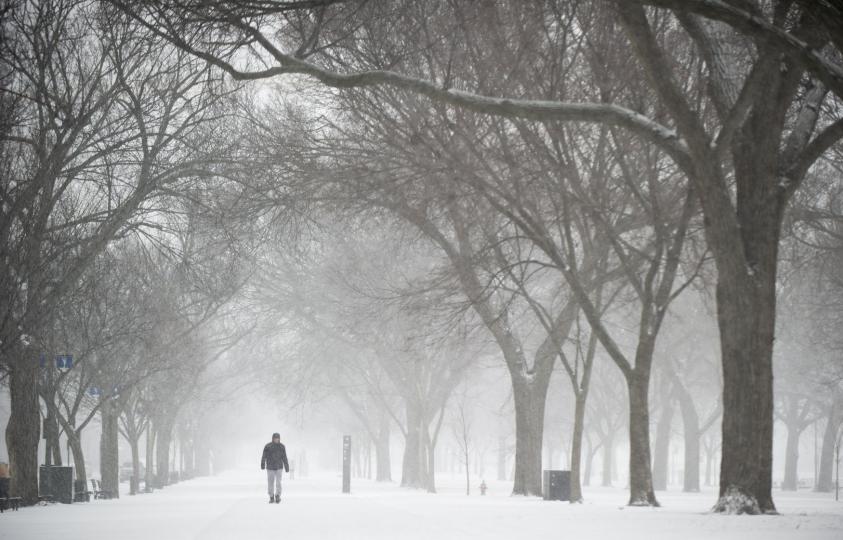
With U.S. temperatures dropping again, federal health officials warn frostbite can permanently damage the body, and severe cases can lead to amputation.
The Centers for Disease Control and Prevention said frostbite causes a loss of feeling and color in the nose, ears, cheeks, chin, fingers or toes.
"Seek medical care if you think you have frostbite. Frostbite is an injury to the body that is caused by freezing. Frostbite causes a loss of feeling and color in affected areas," the CDC said in a statement.
"The risk of frostbite is increased in people with reduced blood circulation and among people who are not dressed properly for extremely cold temperatures."
At the first signs of redness or pain in any skin area, get out of the cold or protect any exposed skin -- frostbite might be beginning. Any of the following signs may indicate frostbite:
-- A white or grayish-yellow skin area
-- Skin that feels unusually firm or waxy numbness.
A victim is often unaware of frostbite until someone else points it out because the frozen tissues are numb, the CDC said.
"If you detect symptoms of frostbite, seek medical care. Because frostbite and hypothermia both result from exposure, first determine whether the victim also shows signs of hypothermia," CDC officials said in a statement.
"Hypothermia is a more serious medical condition and requires emergency medical assistance."
Hypothermia is most likely at very cold temperatures, but it can occur even at cool temperatures above 40 degrees F if a person becomes chilled from rain, sweat or submersion in cold water.
Victims of hypothermia are often elderly people with inadequate food, clothing or heating; babies sleeping in cold bedrooms; people who remain outdoors for long periods -- the homeless, hikers, hunters, etc.; and people who drink alcohol or use illicit drugs.
Warnings signs of hypothermia for adults are: shivering, exhaustion; confusion, fumbling hands; memory loss, slurred speech; and drowsiness.
Signs of hypothermia in infants are: bright red, cold skin; and very low energy.
If there is frostbite but no sign of hypothermia, and immediate medical care is not available, proceed as follows:
-- Get into a warm room as soon as possible.
-- Unless absolutely necessary, do not walk on frostbitten feet or toes -- this increases the damage.
-- Immerse the affected area in warm -- not hot -- water. The temperature should be comfortable to the touch for unaffected parts of the body.
-- Warm the affected area using body heat. For example, the heat of an armpit can be used to warm frostbitten fingers.
-- Do not rub the frostbitten area with snow or massage it at all. This can cause more damage.
-- Don't use a heating pad, heat lamp, or the heat of a stove, fireplace, or radiator for warming. Affected areas are numb and can be easily burned.
These procedures are not substitutes for proper medical care. Hypothermia is a medical emergency and frostbite should be evaluated by a healthcare provider, the CDC said.





